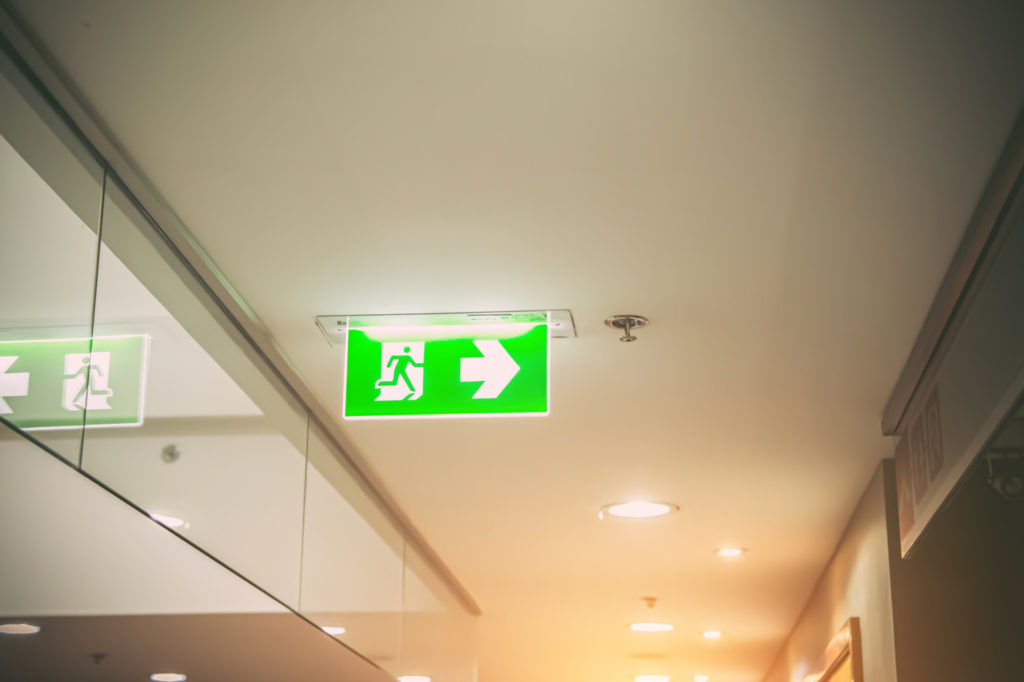
The Importance of Non-Maintained Emergency LED Lighting
31st October 2023
In the world of electrical supplies and installations, one critical aspect often overlooked is the role of non-maintained emergency lighting. Electrical contractors are aware of the importance of lighting systems in any building, but when it comes to emergencies, ensuring safety is paramount. This type of lighting plays a vital role in this regard, offering reliable illumination when power failures or other emergencies occur. In this blog post, we’ll delve into the significance of non-maintained emergency lighting and why it should be a top priority for business owners.
What Is a Non-Maintained Emergency Light?
This refers to a specific type of lighting system designed to activate automatically in the event of a power outage or other emergency situations. Unlike maintained emergency lighting, which are always operational and require regular maintenance, non-maintained emergency lights are typically dormant during normal conditions. However, they instantly illuminate when the primary power source fails, ensuring safe egress and helping occupants navigate through the dark.
These systems are widely used in commercial buildings, industrial facilities, hospitals, schools, and residential complexes. Electrical contractors should be well-versed in the different aspects of non-maintained emergency lighting to provide their clients with the most effective solutions.
Compliance with Safety Regulations
When it comes to emergency lighting, compliance with safety regulations is paramount. Electrical contractors must ensure that the systems they supply and install meet the necessary safety standards and building codes such as BS 5266. Non-maintained emergency lights are subject to specific regulations to ensure their effectiveness during emergencies.
One crucial aspect is the requirement for regular testing and inspection. These lights must undergo periodic checks to ensure they are operational when needed. Electrical contractors can offer maintenance services to their clients to ensure compliance with these regulations. By doing so, they not only help their clients stay within legal boundaries but also contribute to the overall safety of the building occupants.
Benefits of Non-Maintained Emergency Lighting
These systems offer a wide range of benefits that make them indispensable for any building.
- Enhanced Safety: The primary purpose of non-maintained emergency lighting is to provide a safe means of egress during emergencies. This ensures that occupants can evacuate the premises quickly and without accidents, reducing the risk of injury or panic.
- Energy Efficiency: Non-maintained emergency lights are energy-efficient because they only activate when needed. This can lead to substantial energy savings compared to maintained emergency lights that operate continuously.
- Cost-Effective: These systems are cost-effective to install and maintain. Electrical contractors can offer affordable solutions to their clients, making non-maintained emergency lighting a practical choice for various budgets.
- Reliability: Non-maintained emergency lights are designed for reliability. They typically come with backup batteries that can provide illumination for an extended period, ensuring continued safety even during prolonged power outages.
- Easy Installation: Electrical contractors can easily install non-maintained emergency lighting systems without the need for complex wiring or alterations to the existing electrical setup.
NET LED Lighting’s Bourne Range is a selection of non-maintained emergency lighting including an Emergency Mini Downlight IP20 3W, an Emergency Surface Mount Escape Route IP20 2.2W and a Self Test Emergency Twin Spot IP65 5.4W. Designed with compliance and safety regulations in mind, these emergency fittings are easy to install and maintain, making them ideal for electrical contractors.
How Often Should Non-Maintained Emergency Lighting Be Checked?
Non-maintained emergency lighting should be checked and tested regularly to ensure it functions correctly when needed during an emergency. The frequency of these checks and tests can vary depending on local regulations, building codes, and the specific type of emergency lighting system in use. Here are some general guidelines to consider:
- Monthly Functional Test: It’s common practice to perform a brief monthly functional test on non-maintained emergency lighting. During this test, the power to the normal lighting source is temporarily disconnected (usually for a duration of 30 seconds to 2 minutes), simulating a power failure. Non-maintained emergency fittings should activate automatically, providing illumination in the designated areas.
- Annual Full Duration Test: In addition to the monthly functional test, an annual full duration test is typically required. This test involves a more extended period of simulation (usually 3 hours in the UK) to ensure that the emergency lighting can provide continuous illumination for the specified duration. The purpose of this test is to assess the backup battery’s capacity and the longevity of the lights.
- Regular Inspection: Regular visual inspections should be carried out by trained personnel. This includes checking for signs of physical damage, loose connections, or other issues that may affect the proper functioning of the emergency lighting.
- Battery Replacement: Emergency lighting systems are equipped with rechargeable batteries, which have a finite lifespan. Depending on the type of battery used, these batteries may need replacement every 3-8 years or as recommended by the manufacturer.
- Record-Keeping: Maintain detailed records of all tests, inspections, and maintenance activities. This documentation is essential for demonstrating compliance with safety regulations and building codes.
Regular testing and maintenance of non-maintained emergency lighting are essential to ensure the safety of building occupants during power outages or other emergency situations. By following recommended testing schedules and keeping detailed records, you can help ensure that these systems perform as intended when they’re needed most.
It’s crucial to note that these are general guidelines, and the specific requirements for non-maintained emergency lighting testing and maintenance may vary by region and local regulations. Building owners and facility managers should always consult with local authorities and adhere to the applicable safety standards.
Conclusion
Non-maintained emergency lighting is not just an optional add-on; it’s a critical component of any building’s safety infrastructure. Electrical wholesalers and contractors play a pivotal role in ensuring that their clients have access to reliable and compliant non-maintained emergency lighting systems.
By understanding the basics of these systems and adhering to safety regulations, wholesalers and contractors can provide top-notch solutions to their clients. In doing so, they contribute to the overall safety and well-being of building occupants, which is a responsibility that should never be taken lightly.







